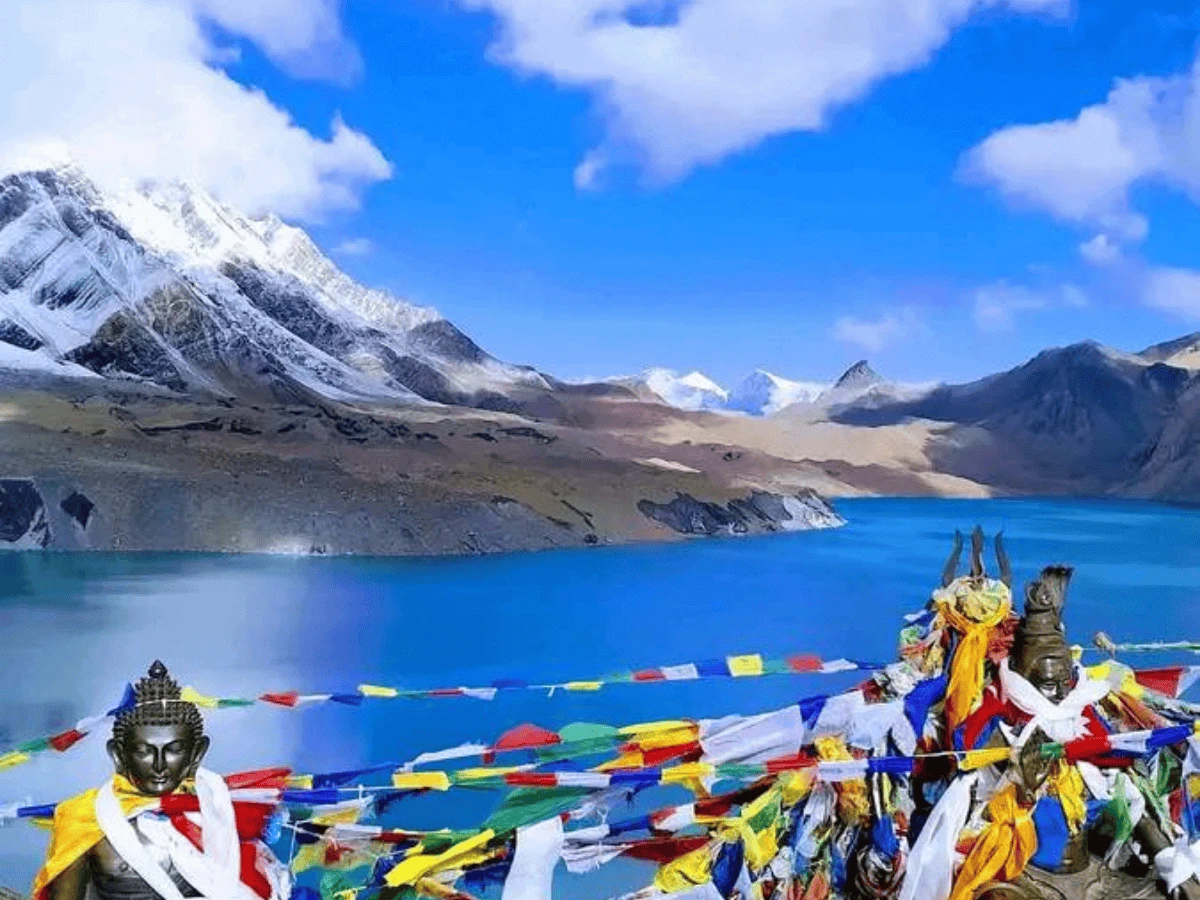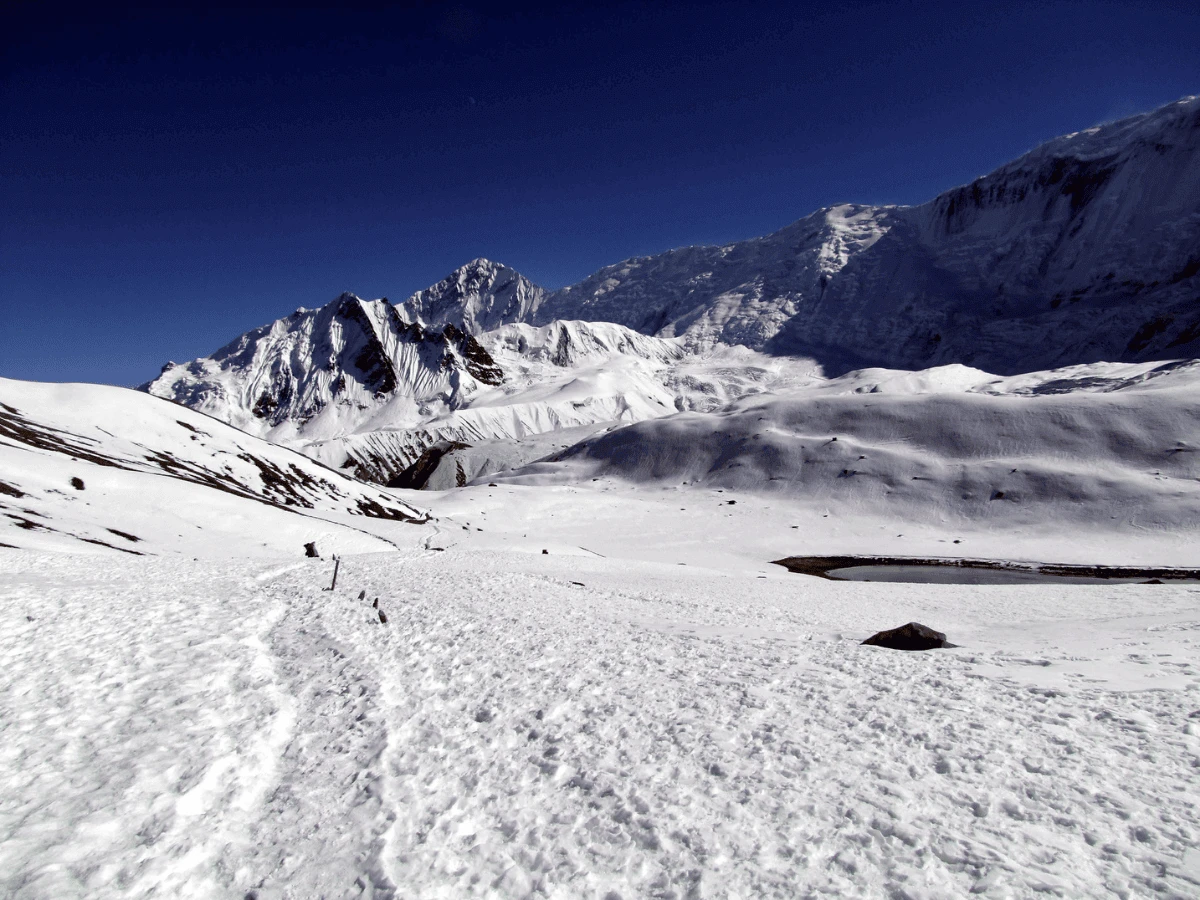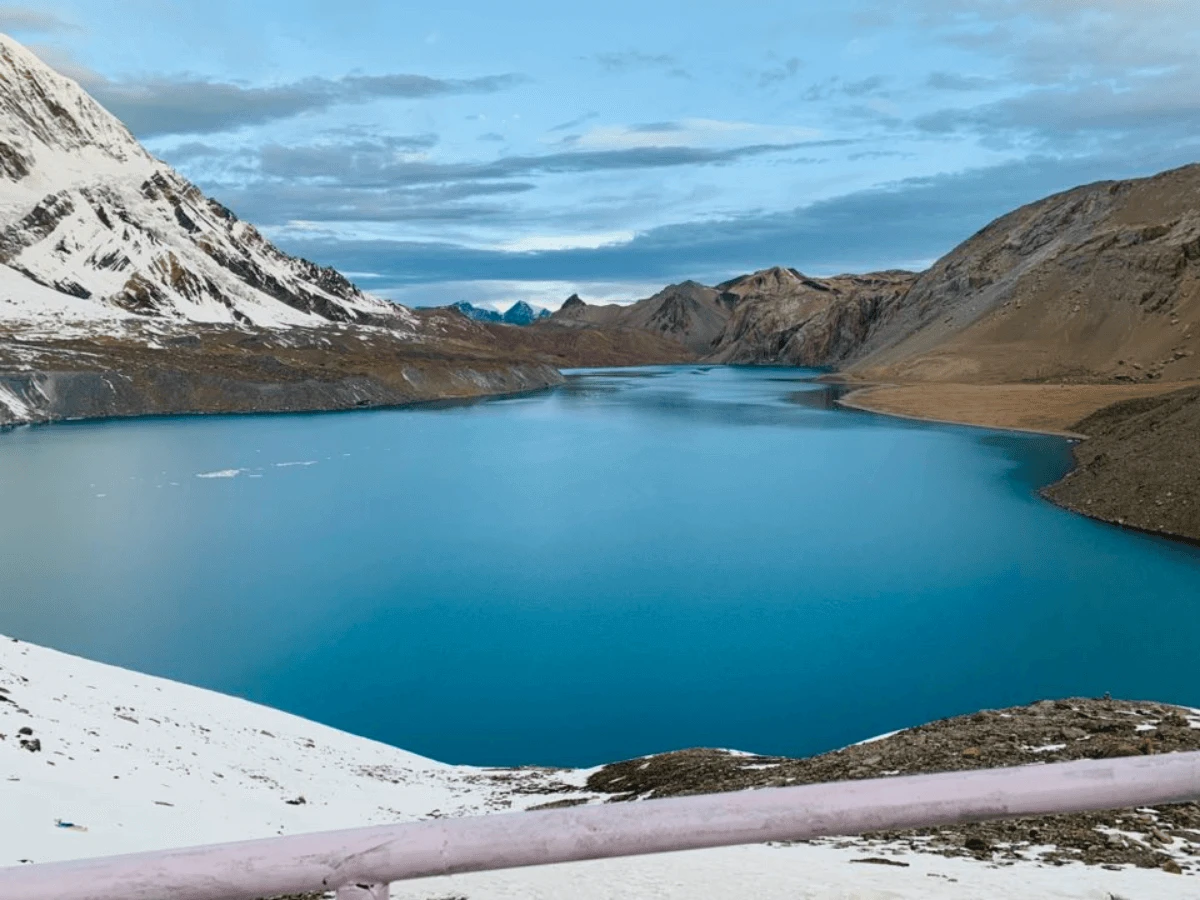Permit Cards for Tilicho Trek
Trekking to Tilicho Lake requires two main permits: the Annapurna Conservation Area Permit (ACAP) and the Trekkers’ Information Management System (TIMS) card. These permit cards are mandatory for all foreign trekkers in the region.
ACAP (Annapurna Conservation Area Permit): This permit grants you entry into the Annapurna Conservation Area, which covers the Tilicho Lake region. The cost for ACAP is around NPR 3,000 (approximately USD $25) per person for foreign nationals. It’s slightly cheaper for SAARC country citizens and free for Nepali nationals. ACAP fees go towards conservation and community projects in the Annapurna region.
TIMS Card: TIMS is a trekkers’ registration system. It’s used for safety and tracking purposes. As of now, individual trekkers must obtain a TIMS card (often USD $20 for individual trekkers, or $10 if in a group). TIMS ensures that trekking agencies and authorities can monitor trekking activity, and it helps in search and rescue operations if needed.
Best Time for 10-Day Tilicho Lake Trek
The best time to trek to Tilicho Lake is during Nepal’s spring and autumn seasons. These periods offer the most stable weather and enjoyable trekking conditions:
Spring (March to May): Spring is a fantastic time for the Tilicho trek. The weather is generally mild, with daytime temperatures in lower altitudes ranging from 10–20°C and cooler nights. The hills are alive with blooming rhododendrons and other wildflowers, adding colour to the trail. Views of the Annapurna range are often clear, especially in April and May, and the Tilicho Lake area, while cold, is accessible. Spring is also a time when many trekkers are on the trails, so you’ll have a lively atmosphere and chances to meet fellow travellers.
Autumn (September to November): This is the peak trekking season in Nepal. After the monsoon rains, the air is crystal clear, offering stunning mountain vistas. Days are pleasantly warm (around 5–15°C) and nights are chilly (could drop to 0°C or below at high altitudes). The trail conditions are dry and stable. Autumn also coincides with the festive season in Nepal (Dashain and Tihar festivals), giving a cultural flavour to your trip. October is typically the most popular month for Tilicho Lake trekking due to near-perfect weather and visibility.
Our Recommendation: The best season for the Tilicho Lake trek is April–May in spring and October–November in autumn. During these months, you get the optimal balance of clear views, manageable temperatures, and stable trail conditions.
Tilicho Lake Trek Accommodation and Teahouses
Accommodation on the Tilicho Lake trek is in teahouses run by local families. These teahouses are simple but provide the essentials a trekker needs: a bed, a blanket or quilt, and hearty meals. Along the Annapurna Circuit route (Besisahar to Manang), the teahouses are quite well-developed. Many offer twin-share rooms, a communal dining hall warmed by a stove, and even amenities like hot showers (for an extra fee) and limited Wi-Fi.
When you divert to Tilicho, you’ll still find lodges in the side valley. Khangsar has a couple of guesthouses. Tilicho Base Camp itself has two or three very simple teahouses. Despite the remoteness, you’ll be surprised to find warm dining rooms and basic but comfortable bedrooms even at Base Camp. The rooms are usually twin-sharing with wooden beds, a mattress, a pillow and a blanket.
Facilities: In lower elevations, some teahouses provide hot showers and can even have charging facilities for batteries (for a small fee). As you go higher, facilities get more basic. Heating is usually only in the dining area. Rooms themselves are not heated, so you’ll want that good sleeping bag at night. Most teahouses offer blankets which you can layer on top.
Tilicho Lake Trek Gear List for 10 Day Tilicho Trek
Proper gear is crucial for a safe and comfortable Tilicho Lake trek. You will be dealing with a wide range of temperatures – from warm and humid at the start to cold at the lake – so layering is key. Here’s a checklist of essential trekking gear and equipment:
Clothing:
- Base Layers: Moisture-wicking thermal tops and leggings.
- Trekking Shirts: A mix of short-sleeve and long-sleeve quick-dry shirts for hiking.
- Trekking Pants: Lightweight, quick-dry pants.
- Fleece or Insulating Layer: A warm fleece jacket or lightweight down jacket for the evenings.
- Outer Jacket: A windproof and waterproof jacket (shell layer) is a must, in case of wind, rain, or snow.
- Down Jacket: In colder seasons (or if you easily get cold), a heavier down jacket is recommended, especially for the pre-dawn hike to Tilicho Lake.
- Headwear: Sun hat or cap for strong sun at altitude; a warm beanie or wool hat for cold.
- Gloves: Lightweight gloves for mild conditions and insulated gloves for cold higher elevations.
Footwear:
- Trekking Boots: Sturdy, well-broken-in hiking boots with good ankle support.
- Camp Shoes/Sandals: For the evenings in teahouses, to let your feet relax.
Backpack and Bags:
- Daypack (25–35 litres): You’ll carry a daypack with essentials.
- Duffle Bag: If you have porters, your main gear goes in a duffle.
Sleeping Gear:
- Sleeping Bag: Rated to at least -10°C (14°F) for spring/autumn, and -20°C (-4°F) if you trek in winter.
- Sleeping Bag Liner: Adds warmth and comfort, and keeps your bag clean.
- Trekking Poles: Highly recommended, especially for steep ascents/descents and for balance on the landslide sections. They save your knees on the downhills.
- Water Bottles / Hydration: Bring two reusable water bottles (1L each) or a hydration bladder.
- Headlamp: A head torch with extra batteries.
Personal Items:
- First Aid Kit: Our guides carry a basic first aid kit, but bring personal medication.
- Sun Protection: Sunscreen (SPF 50+), SPF lip balm, and good UV-blocking sunglasses are essential.
- Multitool or knife: Handy for cutting moleskin, opening packets, etc.
- Waterproof pouches or dry bags
Toiletries
- Towel: Lightweight, quick-dry trekking towel.
- Snacks: Energy bars, trail mix, or chocolates for quick energy on long days.
Miscellaneous:
- Camera/Phone: To capture the stunning scenery – don’t forget spare batteries or a power bank, as the cold can drain batteries faster.
- Power Bank and Cables: As mentioned, electricity can be limited.
- Travel Documents
Tilicho Lake Trek: High Altitude Sickness Prevention
Trekking to Tilicho Lake means venturing into high-altitude terrain (above 3,000 m), where the air is thinner. Altitude sickness (Acute Mountain Sickness, AMS) is a real concern on this trek, especially as you approach and exceed 4,000 m. However, with proper precautions, we can minimise the risk of altitude sickness. Here are key prevention strategies we follow:
- Gradual Ascent is Key. Do not rush and walk on the same pace.
- Staying well-hydrated is one of the simplest and best ways to prevent AMS.
- At high altitudes, alcohol and smoking are a big threat to Altitude sickness.
- Eat a proper and balanced diet, to make sure you get carbohydrate-rich meals as they are easier to metabolise at altitude and provide energy.
- We encourage a slow, steady pace from day one.
- Our guides are trained in altitude sickness awareness. We brief all our trekkers on symptoms of AMS: the early signs include headache, nausea, dizziness, loss of appetite, and trouble sleeping.
- If mild symptoms appear, the first step is to rest and stay at the same altitude
- Medication: Some trekkers choose to use Diamox (Acetazolamide) as a preventive measure.
By following these guidelines – hydrate, go slow, acclimatise properly, and listen to your body – we greatly increase our chances of a successful and healthy trek. Many trekkers safely reach Tilicho Lake each year without issues by taking these precautions.
Meals During the 10-Day Tilicho Trek
Eating well is vital on a trek – it keeps your energy up and also plays a role in acclimatisation. During the Tilicho Lake trek, you will be provided three meals a day (breakfast, lunch, dinner) at the teahouses along the route. One of the joys of trekking in Nepal is the hearty, home-cooked meals you get in these mountain lodges.
Breakfast: Common options are porridge, muesli, or corn flakes with hot milk; bread or toast with eggs (fried, omelette, boiled); pancakes; or the popular Tibetan bread (a puffy fried bread) with jam or honey. You’ll have a choice of tea (black, milk tea, or ginger tea) or coffee.
Lunch & Dinner: We usually stop for lunch at a teahouse along the way, around midday. The lunch menu often includes items like dal bhat tarkari (the Nepali staple of steamed rice, lentil soup, and vegetable curry), fried rice, noodles (chowmein or Thukpa noodle soup), momos (Nepali dumplings), spaghetti or macaroni, and sometimes sandwiches or soup. You will find a wide range of dishes on the menu.
Water: Throughout the trek, water is available at teahouses and from springs. We strongly discourage buying single-use plastic bottled water, as those bottles are a big environmental problem in the mountains. Instead, your guide will help you refill your reusable bottle with boiled water each night and morning (teahouses will boil and might charge a small fee per litre). Alternatively, you can treat water with purification tablets or a filter. Staying well-hydrated (3-4 litres a day) helps prevent altitude sickness, so drink up even if the air is cool and you don’t feel very thirsty.
How to Book the Tilicho Lake Trek?
Ready to embark on this pristine Tilicho Lake? We’ve made our booking procedure simple and customer-friendly. You can either book directly from our website through the package page or email us, or for the customised trip, you can directly WhatsApp us at +9779849790153.
We’ll also send our terms & conditions for you to review (covers things like cancellation policy, what’s included, etc. – we keep it straightforward). To confirm the booking, we ask for a deposit payment. Typically, 20% of the total trip cost is required as a booking deposit. This deposit allows us to start arranging permits, reserve guides, and secure any in-country flights or hotels as needed.
Get more information about Nepal through this Link:






